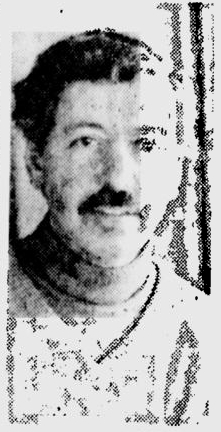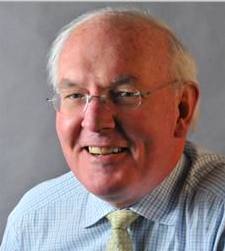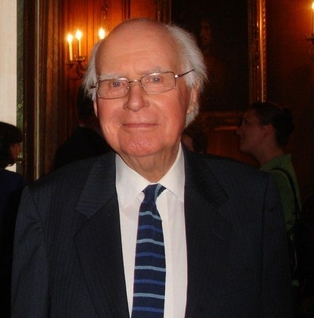Related Research Articles

Gerard David was an Early Netherlandish painter and manuscript illuminator known for his brilliant use of color. Only a bare outline of his life survives, although some facts are known. He may have been the Meester gheraet van brugghe who became a master of the Antwerp guild in 1515. He was very successful in his lifetime and probably ran two workshops, in Antwerp and Bruges. Like many painters of his period, his reputation diminished in the 17th century until he was rediscovered in the 19th century.

Erwin Panofsky was a German-Jewish art historian, whose academic career was pursued mostly in the U.S. after the rise of the Nazi regime.
Burton Silverman is an American artist.

Rico (Federico) Lebrun was an Italian-American painter and sculptor.

Joseph Leo Koerner is an American art historian and filmmaker. He is the Victor S. Thomas Professor of the History of Art and Architecture and Professor of Germanic Languages and Literatures at Harvard University. Since 2008 he has also been Senior Fellow at the Harvard's Society of Fellows.
Theodore Ellis Stebbins, Jr. is an American art historian and curator. Stebbins is currently the Consultative Curator of American Art at the Harvard Art Museums.
Lester Johnson was an American artist and educator. Johnson was a member of the Second Generation of the New York School during the late 1950s. The subject of much of his work is the human figure. His style is considered by critics and art historians to be in the figurative expressionist mode.

Saint Luke Drawing the Virgin is a large oil and tempera on oak panel painting, usually dated between 1435 and 1440, attributed to the Early Netherlandish painter Rogier van der Weyden. Housed in the Museum of Fine Arts, Boston, it shows Luke the Evangelist, patron saint of artists, sketching the Virgin Mary as she nurses the Child Jesus. The figures are positioned in a bourgeois interior which leads out towards a courtyard, river, town and landscape. The enclosed garden, illusionistic carvings of Adam and Eve on the arms of Mary's throne, and attributes of St Luke are amongst the painting's many iconographic symbols.
Ian Lorne Campbell is a Scottish art historian and curator. Campbell was Beaumont Senior Research Curator at the National Gallery, London from 1996 to 2012, and from 1974 to 1996 lectured on the Northern Renaissance at the Courtauld Institute of Art, University of London. He has curated major exhibitions at the National Gallery and other museums, including ones on Rogier van der Weyden at Leuven in 2009 and the Prado in 2015.
Seymour Slive was an American art historian, who served as director of the Harvard Art Museums from 1975 to 1984. Slive was a scholar of Dutch art, specifically of the artists Rembrandt, Frans Hals, and Jacob van Ruisdael.

Daniel J. Robbins was an American art historian, art critic, and curator, who specialized in avant-garde 20th-century art and helped encourage the study of it. Robbins' area of scholarship was on the theoretical and philosophical origins of Cubism. His writings centered on the importance of artists such as Albert Gleizes, Jean Metzinger, Henri Le Fauconnier and Jacques Villon. He was a specialist in early Modernism, writing on Salon Cubists and championed contemporaries such as Louise Bourgeois and the Color Field painters. Art historian Peter Brooke referred to Robbins as "the great pioneer of the broader history of Cubism".
Colin Barry Bailey is a British art historian and museum director. Bailey is currently the Director of the Morgan Library & Museum in New York City. He is a scholar of eighteenth- and nineteenth-century French art, specifically on the artist Pierre-Auguste Renoir.

Paul Hayes Tucker is an American art historian, professor, curator, and author. His specialties include Claude Monet and impressionism.
Christopher S. Wood is an American art historian. He is a professor in the Department of German at New York University.

Egbert Haverkamp-BegemannOON was a Dutch American art historian and professor.
Sidney Goodman was an American figurative painter and draftsman from Philadelphia, PA who explored the human form. Goodman received public notice in the early 1960s for his oil paintings, leading to his inclusion in the 1973 Whitney Biennial. In 1996, the Philadelphia Museum of Art presented a retrospective show of Goodman's paintings and drawings.
Keith Christiansen is an American art historian, curator, and author. He is the chairman of the department of European paintings at New York City's Metropolitan Museum of Art.
Stanton Loomis Catlin was an American art historian, specializing in Latin America. After studying at Oberlin College and the Academy of Fine Arts, Prague, he was to have studied European modern art. The Second World War interrupted these plans and he instead focused on Latin American art. During the war Catlin assisted with exhibiting American art in Latin America, served as a Latin American specialist with the Office of the Coordinator of Inter-American Affairs and as a lecturer at the University of Chile. At the war's end he served with the United Nations Relief and Rehabilitation Administration in Germany, assisting displaced persons.
Christine Poggi is an American art historian and author. She was professor of modern and contemporary art and criticism in the History of Art Department and in the Italian Section of Romance Languages at University of Pennsylvania until 2017. Since September 2017 she has been the Judy and Michael Steinhardt Director of the Institute of Fine Arts at New York University.
References
- ↑ "Eisler, Colin T." Dictionary of Art Historians. Retrieved 2024-06-23.
- ↑ "Eisler, Benita 1937- | Encyclopedia.com". www.encyclopedia.com. Retrieved 2024-06-23.
- Sorenson, Lee. "Eisler, Colin Tobias" in Dictionary of Art Historians Online. Retrieved 24 June 2019.
- "Colin Eisler." Institute of Fine Arts, New York University. Retrieved 30 September 2013.